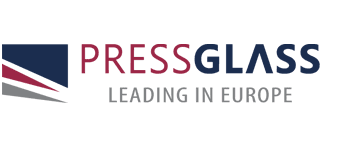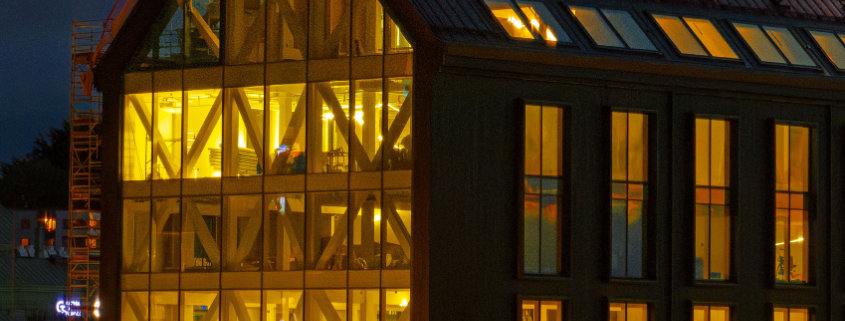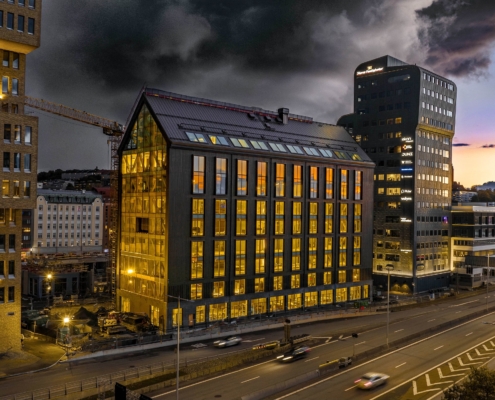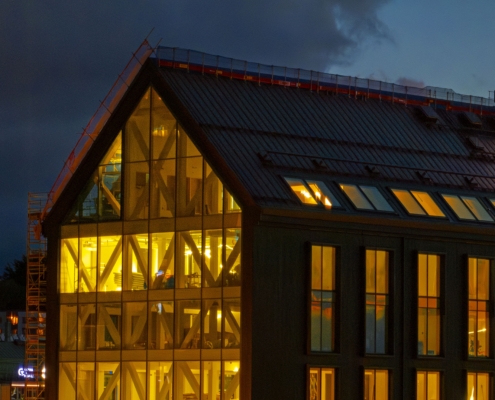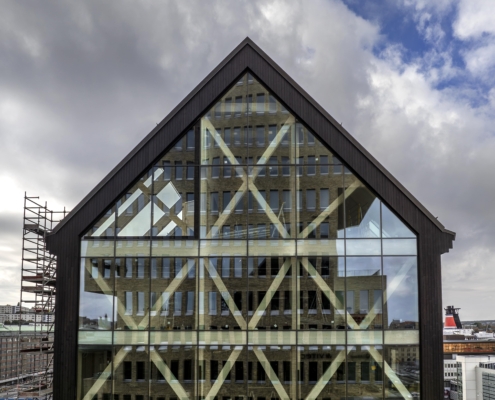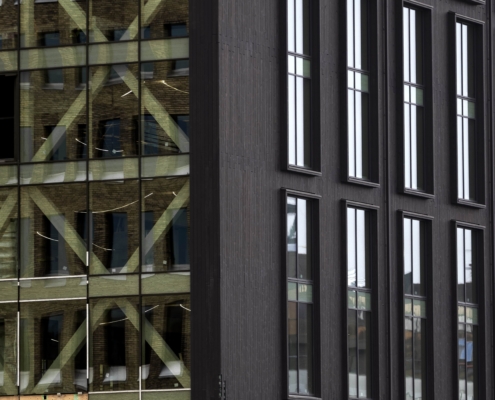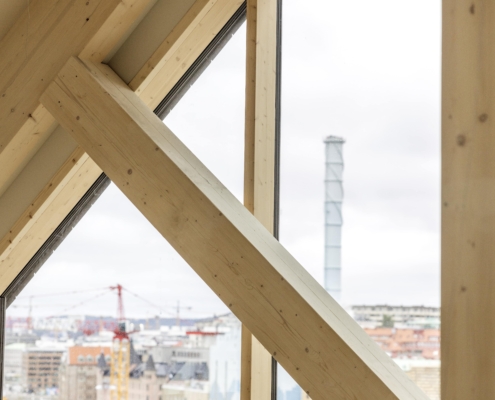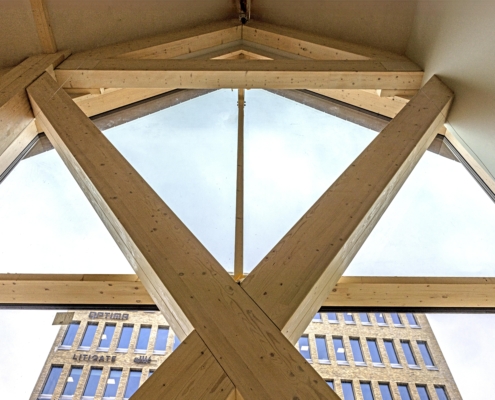Habitat 7 – first low-carbon glass project
Habitat 7 in Gothenburg, designed by the architectural firm Krook & Tjäder AB, marks a turning point in sustainable architecture, featuring ORAÉ® glass with a low carbon footprint. Supported by Saint-Gobain Glass and Press Glass, innovative technologies and carefully selected materials merge beauty with environmental care. Habitat 7 sets new standards for modern office buildings, characterized by reduced emissions and the use of maximum recycled materials while providing an optimal working environment for its occupants.
Challenges of Conscious Architecture in the 21st Century
With growing awareness of climate change and the introduction of new environmental regulations, architecture faces critical challenges: how to design sustainable structures that also ensure maximum comfort for people? Today, the carbon footprint of a building is scrutinized at every stage, with stakeholders seeking ways to reduce it. This includes the operational carbon footprint (emissions related to heating, cooling, and energy use) as well as the embodied carbon footprint (emissions from materials acquisition, production, construction, and end-of-life processes). Choosing the right technologies to address these emission challenges is key, including the use of materials that reduce both embodied and operational carbon footprints.
An excellent example is flat glass made from cullet (recycled glass), which generates about 700 kg less CO₂ per ton compared to glass produced from virgin raw materials. This also reduces fuel consumption and minimizes the use of non-renewable resources in favor of recycled content, embodying circular economy principles. Using one ton of cullet to produce glass saves 1.2 tons of natural raw materials, reducing the demand for sand, limestone, and dolomite, thereby helping to conserve Earth’s dwindling natural resources. Importantly, the use of recycled content does not compromise the quality of the glass, which retains the same visual properties, performance, and durability as glass made from a higher percentage of virgin raw materials.
Legislation and Current Building Standards
Modern regulations, such as the European Green Deal (including « Fit for 55 »), support efforts to reduce greenhouse gas emissions by 55% by 2030, moving us closer to achieving climate neutrality by 2050. Legislation is backed by international multi-criteria environmental certifications like BREEAM and LEED, along with local certification systems.
Habitat 7 in Gothenburg exemplifies such achievements; the project has earned prestigious certifications, demonstrating its low-emission nature and alignment with long-term environmental goals. The building holds a BREEAM certification at the Excellent level, as well as the Swedish NollCO₂ certification, confirming its full climate neutrality. Additionally, Habitat 7 received the CityLab certification, supporting the sustainable development of urban areas (in this case, Masthuggskajen), highlighting its contribution to environmental protection and improved urban space quality.
Innovation and Sustainable Materials
Investors and designers of Habitat 7 analyzed the project to identify materials that would generate the highest carbon footprint. Choosing a wooden structural frame, glass became one of the key materials where the carbon footprint posed a significant challenge to meet environmental standards. The glass accounts for as much as 30% of the entire 4,000 m² facade surface to ensure maximum daylight access and showcase the wooden structure of the building. Thanks to available production and processing capabilities, ORAÉ® glass, containing 64% recycled cullet and manufactured using renewable energy sources, was chosen. This significantly minimizes CO₂ emissions throughout its lifecycle, offering a 42% lower carbon footprint compared to previous solutions (e.g., for 4 mm thick glass, the carbon footprint is only 6.64 kg CO₂ per m²). This value has been confirmed by an Environmental Product Declaration (EPD). The glass also received the Cradle to Cradle® Certified® (C2C Certified®) V4.0 Bronze level, with a Platinum rating for high recycled content in the circular product category.
Advanced Functional Coatings with ORAÉ®
In the Habitat 7 project, ORAÉ® base glass was enhanced with functional coatings that significantly boost its energy efficiency and aesthetics. The facade glazing features COOL-LITE® XTREME ORAÉ® solar control glass, known for its high selectivity (S=2.12). This allows the glazing to transmit a large amount of visible light while blocking infrared radiation, ensuring bright and naturally lit interiors, which positively impacts users’ health and well-being while protecting against overheating. Additionally, this coating has a low reflectance coefficient, visually highlighting the wooden structure of the building as intended by the architects. The result is a harmonious integration of the Habitat 7 facade into Gothenburg’s urban architecture, combining high energy efficiency with aesthetic appeal.
Project Execution – A Showcase of Innovative Solutions
Habitat 7, developed by NCC, faced challenges due to strict emission minimization requirements and the need to ensure comfort for office workers along a busy street. Typically, noise reduction requires thicker glazing, which would increase the carbon footprint. However, the selected glass configurations managed to avoid this issue.
– « This was my first major project using ORAÉ®, » admitted Oskar Storm, Technical Specification Manager at Saint-Gobain Glass. « I’ve been working on glass recycling for years, and seeing almost two-thirds of the glass made from recycled material was a real breakthrough. » He added that simplifying the glass types streamlined production and emphasized coatings with low reflectance to showcase the wooden structure. The chosen configuration met both lighting and energy transmission requirements, fitting most of the facade.
A Symbol of Sustainable Architecture for the Future
Climate change and the resulting need to adapt to new environmental realities are among the greatest challenges we currently face. With global warming impacting nearly every aspect of life, precise, effective, and swift actions are required to slow this process. This is especially true for the construction industry, responsible for almost 40% of global greenhouse gas emissions. The development of sustainable, low-emission solutions that also offer excellent user benefits is undoubtedly the future of construction. Habitat 7 symbolizes a modern approach to architecture, blending into the urban fabric with a sustainable building that, thanks to the consistency and determination of its architects and investors, achieves the most ambitious goals in reducing carbon footprints using advanced technologies, all for the comfort of space users and the care for the planet’s future.
